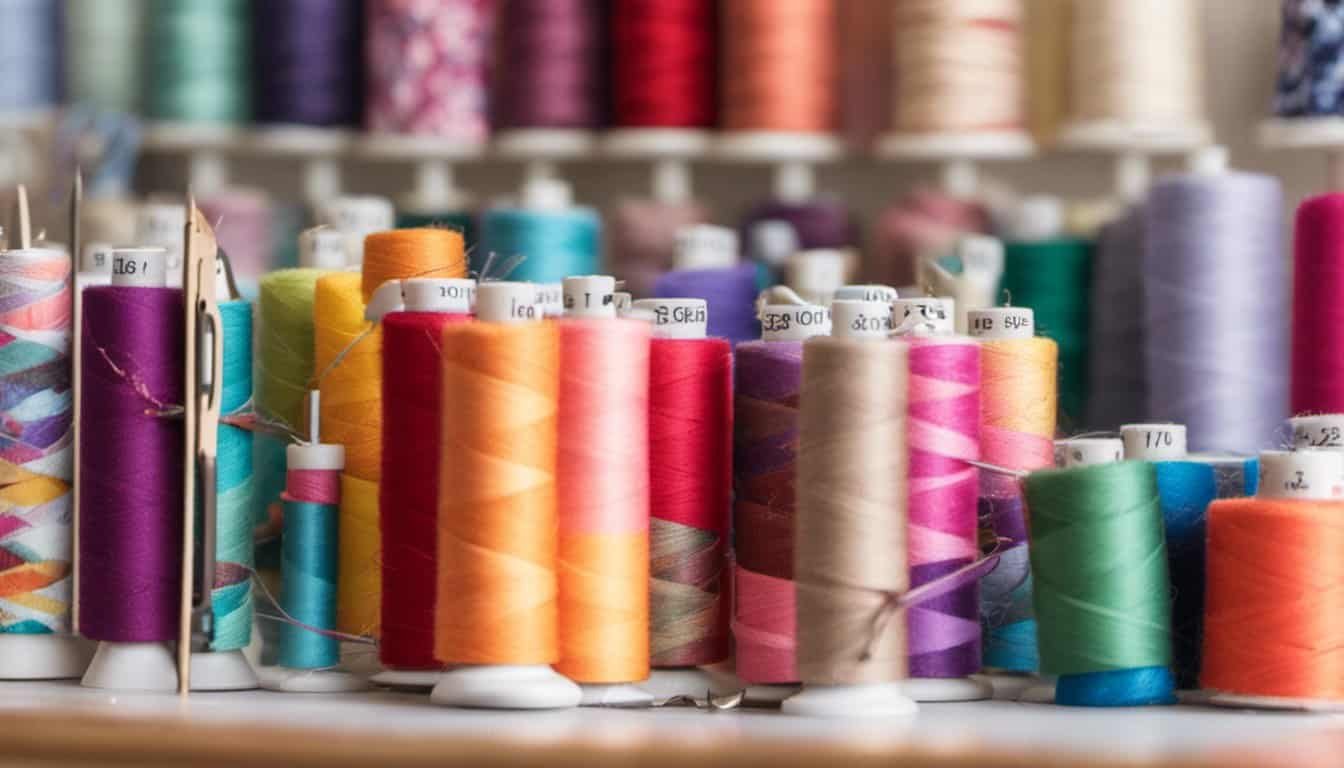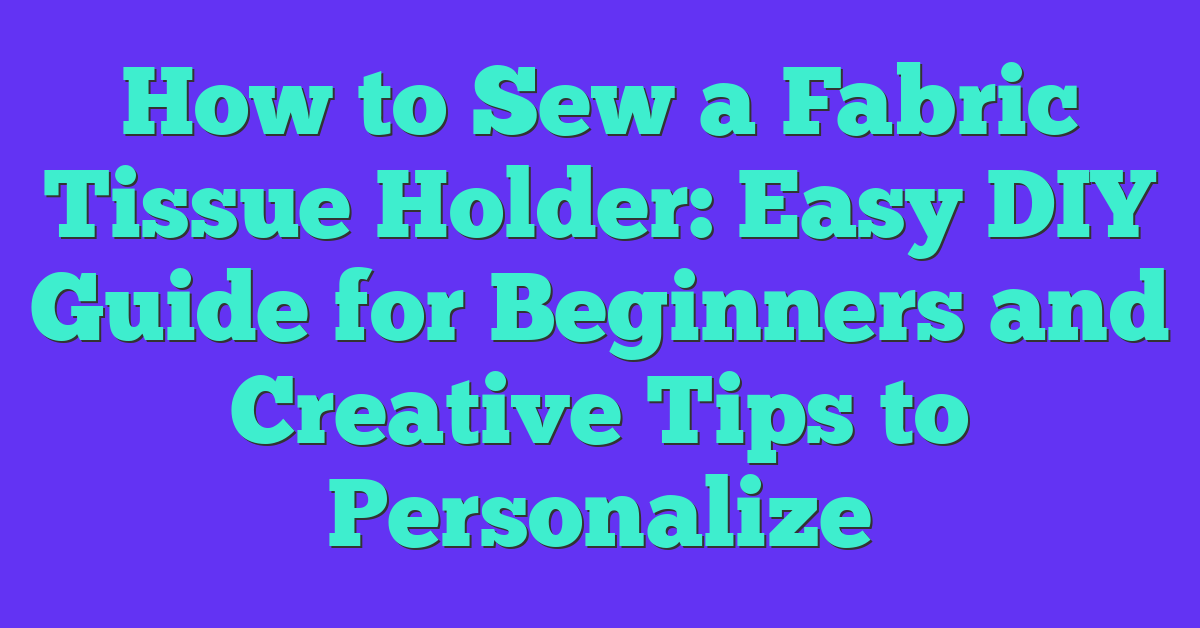Choosing the right thread can make all the difference in your sewing projects. I remember the frustration of picking the wrong one and seeing my designs fall apart. That’s why understanding different types of thread is essential for every sewist.
From lightweight cottons to strong polyester blends, each thread has its unique benefits. Whether you’re working on delicate fabrics or sturdy materials, the perfect thread ensures durability and a professional finish. Let’s dive into the essentials together so your next project turns out just the way you imagined.
With the right thread, your creativity knows no bounds. I’ll guide you through key factors to consider, helping you make informed choices and elevate your sewing game. Let’s get started on finding the perfect thread for your next masterpiece.
Importance Of Choosing The Right Thread
Selecting the right thread ensures your project holds up over time. It directly affects the strength and durability of your seams. For instance, using polyester thread on denim prevents breakage during heavy use. Matching thread weight to fabric weight enhances the overall appearance.
Proper thread choice also influences stitch quality. A suitable thread reduces puckering and skipping, providing a smooth finish. Additionally, selecting the right color complements your fabric, making your design stand out.
Consider these key factors:
- Strength: Ensures your project withstands stress and wear.
- Compatibility: Matches thread to fabric type for optimal results.
- Appearance: Achieves a professional and aesthetically pleasing finish.
- Durability: Extends the life of your creation by preventing premature failures.
Choosing the right thread not only improves functionality but also elevates the craftsmanship of your work.
Types Of Threads
Choosing the right thread type enhances your project’s durability and finish. I work with various threads to match different fabric needs.
Polyester Threads
Polyester threads offer high strength and elasticity, making them ideal for heavy fabrics like denim and upholstery. They resist shrinking and stretching, ensuring long-lasting seams. Additionally, polyester threads are colorfast, maintaining their hue even after multiple washes.
Nylon Threads
Nylon threads are exceptionally strong and abrasion-resistant, suitable for projects requiring extra durability, such as outdoor gear and bags. They have excellent elasticity, which helps accommodate fabric movement without breaking. Nylon threads also dry quickly, reducing drying time in sewing projects.
Cotton Threads
Cotton threads provide a natural finish, perfect for lightweight and natural fabrics like cotton and linen. They are breathable and have minimal stretch, which is ideal for garments and home textiles. Additionally, cotton threads are available in a wide range of colors, allowing for seamless color matching with various fabrics.
Factors To Consider
Choosing the right thread ensures your project turns out as envisioned. I consider several key factors to make the best selection.
Material Compatibility
Matching thread to fabric is essential for optimal results. If I work with cotton fabrics, I opt for cotton or polyester threads to maintain fabric integrity. For synthetic materials like polyester or nylon, polyester threads provide excellent adhesion and flexibility. When dealing with delicate fabrics such as silk or chiffon, I choose fine threads to prevent damage and ensure smooth stitching.
Thread Strength And Durability
Ensuring thread strength supports the longevity of my projects. I assess the tensile strength required based on the fabric’s usage. For heavy-duty items like denim or upholstery, I select polyester or nylon threads known for their high durability and resistance to wear. In contrast, for garments subject to regular washing, I prefer polyester threads due to their ability to withstand repeated laundering without losing strength.

Thread Thickness And Weight
Selecting the appropriate thickness enhances both appearance and functionality. I measure thread weight using the Tex system, where a lower number indicates a thicker thread. For visible seams or decorative stitching, I choose thicker threads to add emphasis and texture. Conversely, for hidden seams or lightweight fabrics, I select finer threads to ensure subtlety and prevent puckering. Balancing thread thickness with fabric weight ensures seamless integration and professional-looking results.
Application-Based Recommendations
Choosing the right thread depends on your project’s specific needs. Here are tailored recommendations based on different applications.
Sewing Projects
For everyday sewing projects, selecting a thread that balances strength and appearance is essential. Polyester thread offers high durability and works well with various fabric types, from cotton to lightweight synthetics. Cotton thread provides a soft, natural finish, making it ideal for garments and linens. When sewing lightweight fabrics like silk or chiffon, opt for a finer thread to prevent puckering and ensure smooth seams. Example uses include shirts, dresses, and home textiles.
Outdoor And Heavy-Duty Applications
Heavy-duty projects require threads with maximum strength and resistance to wear. Nylon thread stands out for its exceptional strength and abrasion resistance, perfect for outdoor gear, backpacks, and upholstery. Polyester thread is also suitable for robust applications, offering flexibility and resistance to UV rays and moisture. For projects involving denim or canvas, choose a thicker thread to ensure sturdy seams that withstand regular use and stress.
Embroidery And Decorative Uses
Embroidery and decorative projects benefit from specialized threads that enhance the visual appeal. Cotton embroidery thread, available in a wide range of colors, provides a smooth finish for detailed stitching. Metallic threads add shimmer and highlight intricate designs, making them perfect for embellishments and decorative seams. When working on needlepoint or cross-stitch, opt for high-twist threads to prevent tangling and maintain sharp, vibrant patterns.
Tips For Testing And Selection
« What Is Sewing? A Beginner’s Guide to the Basics – You Won’t Believe How Easy It Is!
When choosing the right thread, testing ensures the best match for your project. Here are my top tips:
- Swatch Trials
- Create sample stitches using different threads on your fabric.
- Observe how each thread interacts with the material.
- Assess the appearance and strength of each sample.
- Strength Assessment
- Gently pull on a sewn seam to test its durability.
- Select threads that withstand the expected stress of your project.
- Prioritize polyester or nylon for heavy-duty items.
- Color Matching
- Compare thread colors under various lighting conditions.
- Choose threads that complement or blend seamlessly with your fabric.
- Consider using contrasting threads for decorative stitches.
- Thread Thickness
- Match thread weight to fabric density for optimal results.
- Use fine threads for lightweight fabrics and thicker threads for sturdier materials.
- Ensure thread size enhances both functionality and aesthetics.
- Compatibility Check
- Verify thread compatibility with your sewing machine.
- Test for smooth threading and consistent stitching.
- Avoid threads that cause frequent breakage or tangling.
- Durability Testing
- Wash and dry a sewn sample to check thread resilience.
- Choose threads that maintain integrity after multiple washes.
- Opt for colorfast threads to prevent fading over time.
- Specialized Threads
- For embroidery, use threads designed for detailed work.
- Explore metallic or specialty threads for added flair.
- Select the appropriate thread type based on your project’s specific needs.
By following these tips, I ensure my thread choices enhance both the functionality and beauty of my sewing projects.
Conclusion
Choosing the right thread can make all the difference in your sewing projects It’s amazing how the perfect thread brings everything together ensuring your work looks professional and lasts longer Trusting your instincts and experimenting with different types will help you find what works best for each project I love seeing how the right thread elevates my creations and I hope you do too Happy sewing!















